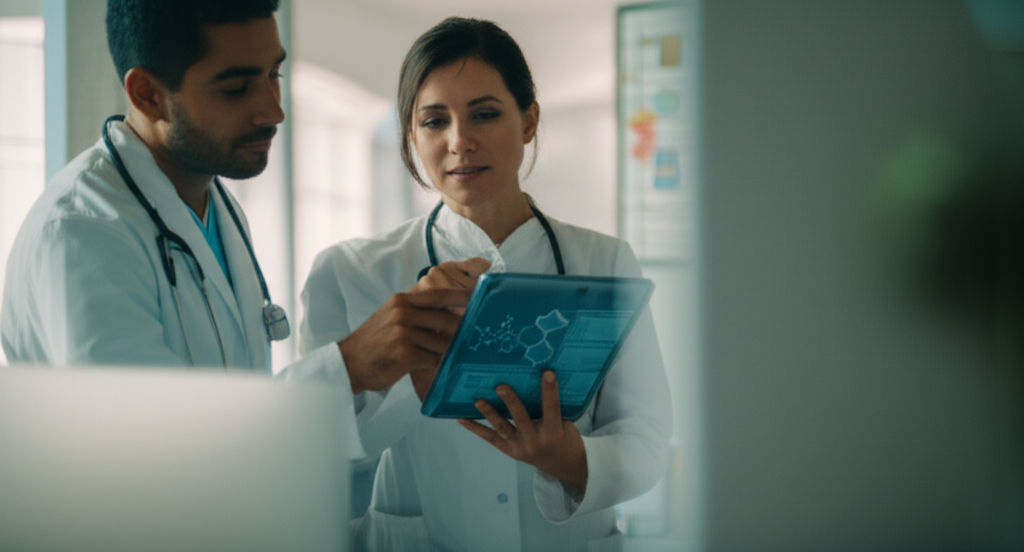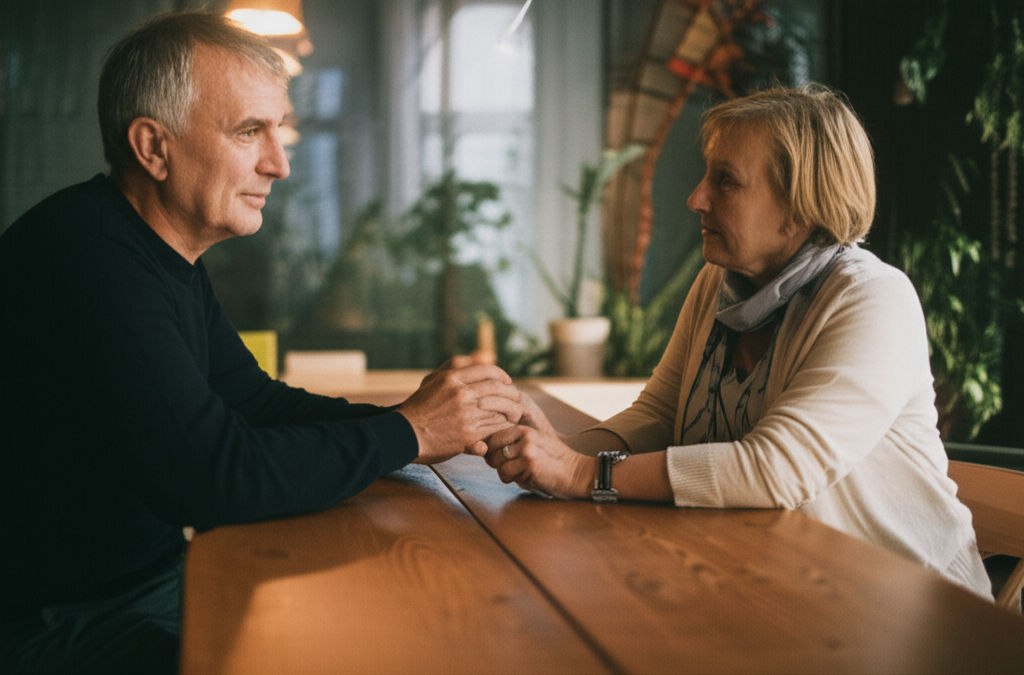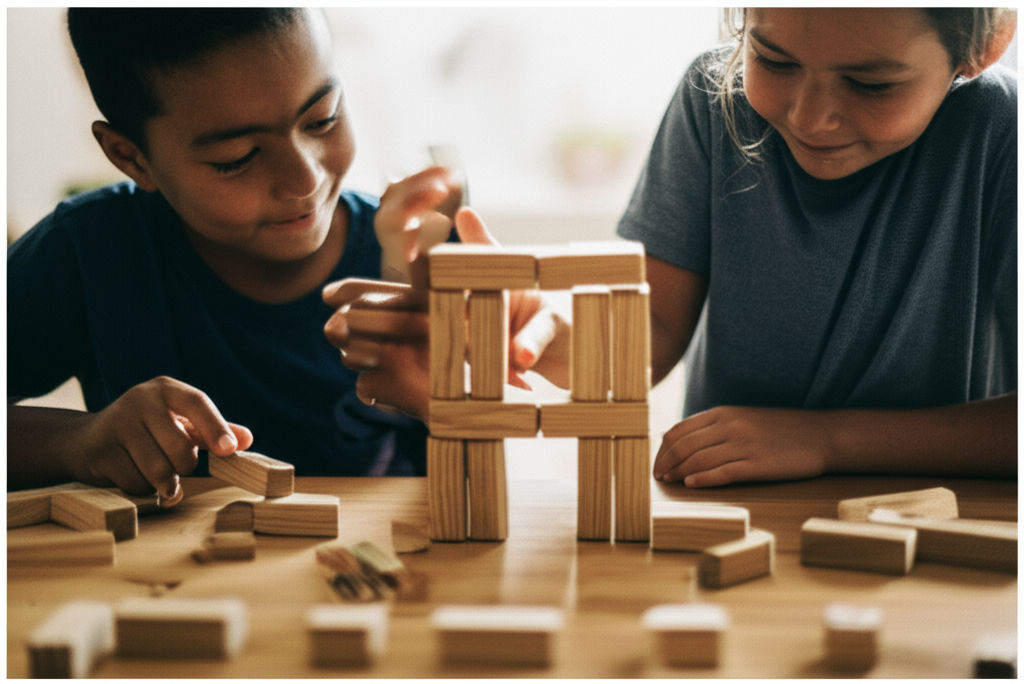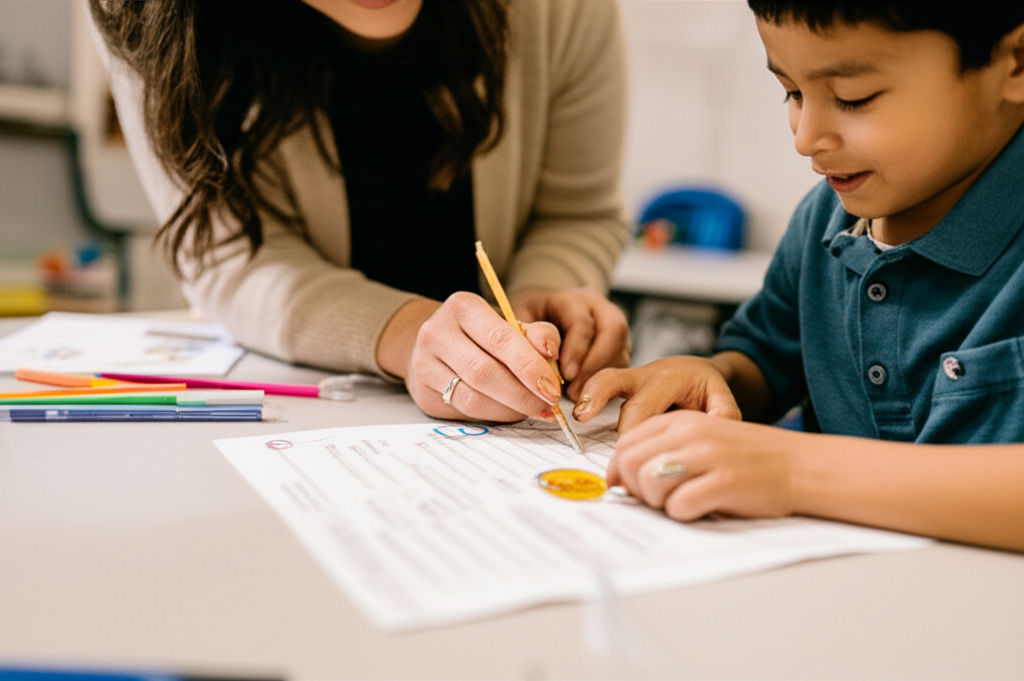What Happens in an Education Building
Ikhsan Rizki

Photo: Explore education buildings as dynamic hubs for learning, community, and holistic growth, far beyond traditional classrooms.
Beyond Bricks and Mortar: What Happens in an Education Building?
When you picture an education building, what comes to mind? Perhaps rows of desks, blackboards, and a teacher at the front of a classroom. While these elements are certainly part of the picture, the reality of what happens in an education building is far more dynamic and multifaceted. These structures are not merely shelters; they are carefully designed ecosystems where learning flourishes, communities connect, and futures are shaped.
This comprehensive guide will explore the vibrant activities, crucial roles, and evolving purpose of education buildings, revealing how they serve as vital hubs for growth, discovery, and lifelong learning.
The Heart of Learning: Inside the Classrooms and Labs
At the core of any education building are the spaces dedicated to direct instruction and hands-on exploration. This is where the magic of learning truly happens.
Daily Lessons and Interactive Learning
Gone are the days when classrooms were solely about rote memorization and passive listening. Modern educational spaces are designed to facilitate active, engaging, and collaborative learning. You'll find:
- Flexible Seating Arrangements: Desks might be grouped for team projects, arranged in a circle for discussions, or easily reconfigured for individual study. This adaptability encourages different teaching methods and learning styles.
- Technology Integration: Classrooms are equipped with interactive whiteboards, computers, and connectivity that support digital learning and research. Students might be working on group presentations, conducting online research, or engaging with educational software.
- Teacher as Facilitator: Teachers act as guides and mentors, fostering curiosity and encouraging students to take an active role in their education. They design experiences that promote problem-solving, critical thinking, and communication.
Specialized Labs and Creative Spaces
Beyond the traditional classroom, education buildings house specialized environments that cater to diverse subjects and learning styles:
- Science Laboratories: Here, students don lab coats and conduct experiments, bringing scientific theories to life through practical application.
- Art Studios and Music Rooms: These creative hubs buzz with activity, from painting and sculpting to musical rehearsals and performances, nurturing artistic expression and talent.
- Maker Spaces and Tech Labs: Reflecting the shift towards hands-on, project-based learning, these areas provide tools and resources for students to design, build, and innovate, often integrating technology.
Beyond Academics: Fostering Growth and Well-being
An education building's purpose extends far beyond academic instruction. It's a place designed to support the holistic development of every individual within its walls.
Support Services for Students
For students to thrive academically, their well-being must be prioritized. Education buildings typically offer a range of support services:
- Counseling Offices: Providing a safe space for students to discuss personal challenges, academic stress, or future plans.
- Health Clinics: Addressing immediate health needs and promoting overall student wellness.
- Libraries and Resource Centers: More than just book repositories, these are often dynamic "Global Resource Centers" offering quiet study areas, collaborative workspaces, and access to a vast array of learning materials, both physical and digital.
- Cafeterias and Dining Halls: Essential spaces for nourishment and social interaction, often designed to be welcoming and comfortable.
Extracurricular Activities and Clubs
A significant part of what happens in an education building after class hours involves a rich tapestry of extracurricular activities. These programs allow students to explore interests, develop new skills, and build a sense of community.
- Sports Facilities: Gymnasiums, athletic fields, and sometimes even swimming pools are integral parts of an education building, promoting physical health, teamwork, and discipline.
- Auditoriums and Performance Spaces: These venues host school plays, concerts, assemblies, and community events, showcasing student talent and fostering a sense of collective pride.
- Club Meeting Rooms: From debate clubs and robotics teams to environmental groups and student government, these spaces are alive with collaborative projects and passionate discussions.
The Backbone: Administration and Support Staff
Behind every successful learning environment is a dedicated team of professionals ensuring smooth operations and strategic direction.
Guiding the Institution: Leadership and Management
The leadership within an education building is crucial for setting the tone and direction.
- Principals and Administrators: These individuals are the instructional leaders and managers of the facility's day-to-day operations. Their duties range from monitoring student arrival and departure, visiting classrooms, conducting teacher observations, to developing budgets and ensuring campus security.
- Department Heads: They oversee specific academic areas, ensuring curriculum alignment and supporting teachers within their departments.
Keeping Things Running: Operational Support
A myriad of professionals work tirelessly to maintain the environment and provide essential services.
- Teachers: Beyond delivering lessons, teachers play a vital role in shaping students' futures, fostering positivity, encouraging active learning, and helping students understand their strengths and weaknesses.
- Custodial and Maintenance Staff: They ensure the building is clean, safe, and functional, playing a critical role in student attendance and overall well-being.
- Office Staff: The administrative heart of the building, managing communications, records, and supporting the daily flow of activities.
- Building Aides: These individuals assist with maintaining an orderly atmosphere, supervising students, and supporting teachers.
An Education Building as a Community Hub
Modern education buildings are increasingly recognized as vital community assets, extending their reach beyond the traditional school day.
Parental Involvement and Community Events
Many education buildings serve as gathering places for parents and the wider community.
- Parent-Teacher Organizations (PTO/PTA) Meetings: These groups often meet within the school, fostering collaboration between home and school.
- Community Events: From voting polls to local fairs, sports leagues, and adult education classes, education buildings often open their doors to serve broader community needs. This integration helps break down barriers between the school and its surroundings.
Lifelong Learning Opportunities
The concept of lifelong learning is transforming education buildings into multi-generational learning communities.
- Adult education programs, workshops, and vocational training often take place in these facilities, allowing individuals of all ages to acquire new skills or further their knowledge.
- Some campuses even include museums, libraries, daycare facilities, and fitness centers that are utilized by students, staff, and community residents alike.
The Future of Education Buildings
The design of education buildings is constantly evolving to meet the changing needs of learners and educators. Architects are moving away from rigid, "cell-and-bell" structures towards more flexible, sustainable, and technology-integrated spaces. We're seeing:
- Flexible Classrooms: Designed with movable furniture and adaptable layouts to support diverse teaching methods.
- Sustainable Design: Incorporating elements like solar panels, green roofs, and natural lighting to create healthier and more environmentally friendly learning environments.
- Buildings That Teach: The very architecture can become an instructional tool, with exposed systems demonstrating principles of science, math, and engineering.
These innovations ensure that education buildings remain at the forefront of fostering engaging, effective, and future-ready learning experiences.
Conclusion
What happens in an education building is a complex and beautiful symphony of learning, growth, and community engagement. From the quiet focus of individual study to the vibrant energy of group projects and extracurricular activities, these structures are far more than just walls and roofs. They are dynamic environments that shape minds, nurture talents, and build futures. Understanding their multifaceted role helps us appreciate their profound impact on individuals and society as a whole.
What aspects of an education building do you find most impactful? Share your thoughts in the comments below!
Frequently Asked Questions
Q1: Is an education building just for students?
No, an education building serves a much broader purpose. While students are its primary occupants, these buildings also house teachers, administrators, support staff, and often serve as community hubs for parents, local organizations, and adult learners.
Q2: What kind of staff works in an education building?
An education building employs a wide range of professionals, including principals, assistant principals, teachers across various subjects, counselors, nurses, librarians, administrative staff, custodial and maintenance teams, and sometimes even cafeteria workers and security personnel.
Q3: How do education buildings support student well-being?
Education buildings support student well-being through dedicated spaces like counseling offices and health clinics, by providing safe and inviting physical environments, and by offering extracurricular activities that promote social, emotional, and physical development. The design itself, with features like natural light and good acoustics, can positively impact student mood and concentration.
Q4: Are education buildings only for traditional learning?
Not anymore. While traditional classroom learning remains fundamental, modern education buildings increasingly incorporate flexible learning spaces, specialized labs, maker spaces, and technology-rich environments to support diverse learning styles, project-based learning, and collaborative activities. Many also serve as centers for lifelong learning and community engagement.
Business
View All
November 19, 2025
Why Deloitte Is Laying Off ConsultantsUnderstand why Deloitte is laying off consultants. Economic headwinds, post-pandemic overhiring, and shifting client needs are key factors.
Ikhsan Rizki

August 11, 2025
Review of HON Office FurnitureChoosing office furniture? Our HON review covers reliability, affordability, and who it's best for, helping you pick the right fit for your workspace.
Ikhsan Rizki

August 31, 2025
Best Ways to Find Costco Coupons in 2025Unlock maximum Costco savings in 2025! Discover how to find Instant Savings, use the app, and get email deals for ultimate discounts.
Ikhsan Rizki

November 5, 2025
Virginia Business Search Made EasyUnlock Virginia business info effortlessly! Our guide simplifies SCC searches for name availability, due diligence, and company details. Get reliable results.
Ikhsan Rizki

August 14, 2025
Business Lessons from Busy SpiderUnravel the secrets of success! Discover how a spider's strategic web design, persistence, and efficiency can transform your business.
Ikhsan Rizki

September 10, 2025
How to Style a Risky Business OutfitElevate your office style! Master the "risky business outfit," balancing professionalism with a confident, fashion-forward edge.
Ikhsan Rizki
Economy
View AllUnpack "full employment" beyond zero unemployment. Discover its true meaning, impact on the economy, and how it shapes policy. Master key economic concepts.
Ikhsan Rizki
Decatur, GA on a budget? Learn strategies to find an affordable, quality hotel stay. Enjoy your trip without sacrificing comfort or location!
Ikhsan Rizki
Find comfortable, clean, and affordable economy lodges for your next trip. Our guide helps you discover budget-friendly stays near you!
Ikhsan Rizki
Unlock motivation with the power of token economies! Learn the psychology behind this system to drive positive behavior and achieve goals.
Ikhsan Rizki
Upgrade your long-haul flight! Discover ITA Airways Premium Economy: enhanced comfort, more space, and amenities without the business class price tag. Is it for...
Ikhsan Rizki
Is Singapore Airlines Economy a cut above? Uncover its premium comfort, world-class entertainment, and renowned service in this guide.
Ikhsan Rizki
Education
View AllMaster "Physical Education" in Spanish! This guide covers "Educación Física," "EF," and regional variations like "Gimnasia." Speak confidently!
Read MoreDiscover special education teacher salaries! Learn national averages, key influencing factors, and strategies to boost your income in this rewarding career.
Read MoreUncover the UGA Marine Center in Savannah, GA. Dive into groundbreaking marine research, education, and conservation protecting Georgia's coast.
Read MoreEmpower your child's special education journey. An IEE offers an unbiased second opinion to ensure their needs are truly met.
Read MoreShape the future of education! Explore Director of Education jobs, key responsibilities, and career paths for experienced leaders.
Read MoreUnpack why Democratic AGs are suing the Education Dept. Learn the key issues, from student loans to policy, and their impact on American education.
Read MoreHealth
View All
September 24, 2025
Pueblo Community Health ServicesDiscover Pueblo Community Health Services (PCHS): accessible, comprehensive medical, dental, & behavioral health for all in Pueblo. Your guide to quality care.
Ikhsan Rizki

August 24, 2025
LifeStance Health Reviews TodayConsidering LifeStance Health? Get real patient insights. Explore services, reviews, and tips to decide if this mental health platform is right for you.
Ikhsan Rizki

November 6, 2025
Ponce Health Sciences University InfoPonce Health Sciences University (PHSU): A distinguished choice for health education, offering diverse programs, cutting-edge research & community focus.
Ikhsan Rizki

November 29, 2025
San Jose Behavioral ServicesSan Jose behavioral services: Your guide to mental wellness in Silicon Valley. Find local support & thrive amidst life's pressures.
Ikhsan Rizki

October 26, 2025
Follow My Health Northwell Login TipsGet seamless access to your Follow My Health Northwell patient portal. Our guide offers tips to resolve login issues and manage your health records with ease.
Ikhsan Rizki

August 24, 2025
Top 25 Health Science Jobs for 2025Unlock your future! Discover the top 25 in-demand health science jobs for 2025. Find a fulfilling and stable career in healthcare.
Ikhsan Rizki
Popular Articles
View All
1
2
3
4
5
6
7
8
9
10
Lifestyle
View All
November 2, 2025
What is HM Lifestyle on your credit card
Mysterious "HM Lifestyle" charge on your card? Unravel what it means, from H&M purchases to potential fraud, and how to investigate.

September 18, 2025
Life With a Five Million Dollar Net Worth
Ever wonder what life with $5M net worth is *really* like? Uncover the true realities, responsibilities, and financial freedom beyond the luxury.

November 24, 2025
Inside Red Monkey Lifestyle Brand
Red Monkey Lifestyle Brand: Authentic rock & roll style handcrafted in America. Unique, vintage-inspired accessories for those who stand out.

October 1, 2025
The Passage Hotel Is a Must Stay
The Passage Hotel Basel: Your must-stay destination for luxury, comfort, and an unbeatable city center location. Unforgettable travel awaits!

August 13, 2025
Manchester Adult Lifestyle Overview
Unlock your best life in Manchester! This guide covers top neighborhoods, career insights, leisure, and community to help you thrive in this vibrant city.

October 8, 2025
Bose Model 5 Music System
Explore the Bose Model 5 Music System. Get immersive, room-filling sound from a sleek, compact home audio solution. Rediscover your music!

November 8, 2025
Inside the world of Lifestyle Inc
Explore "Lifestyle Inc," the vast ecosystem shaping modern life. Understand its influence, make mindful choices, and take control of your well-being.

November 18, 2025
Are Lifestyles Prices Worth It
Are your lifestyle choices worth the cost? Decode "lifestyle prices" to ensure you're getting true value from your spending.
Sports





Travel
View All
October 31, 2025
Tex Best Travel Center Roadside Stop
Find the perfect pit stop in Texas! Tex Best Travel Center offers clean restrooms, diverse fuel, and food to redefine your road trip experience.

October 4, 2025
EOS Vanilla Cashmere Hand Cream Travel Size
Banish dry travel hands! Get soft, hydrated skin on the go with EOS Vanilla Cashmere Hand Cream Travel Size. Your compact hydration secret.

September 27, 2025
Prayer for Safe Travel
Find peace and protection for your journey. Discover how a powerful prayer for safe travel can reduce anxiety and bring divine peace of mind.

August 5, 2025
Direct Line travel insurance
Direct Line travel insurance: No new policies. Existing customer? This guide helps you manage your policy, understand coverage, & navigate claims.

October 4, 2025
Fellow Travelers Book on Love and Politics
Discover Thomas Mallon's "Fellow Travelers," a poignant novel masterfully intertwining forbidden love with McCarthy-era political paranoia.

November 7, 2025
Lululemon Travel Bag for Active Lifestyles
Elevate your active travel! Find the ultimate Lululemon bag for seamless organization, durability, and style on all your adventures.

















